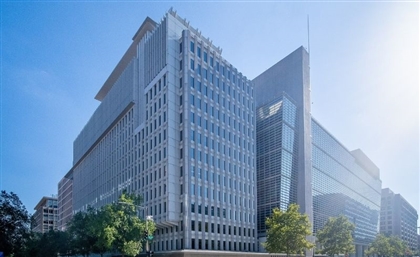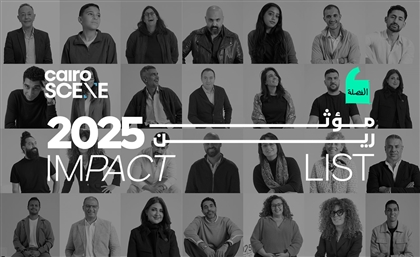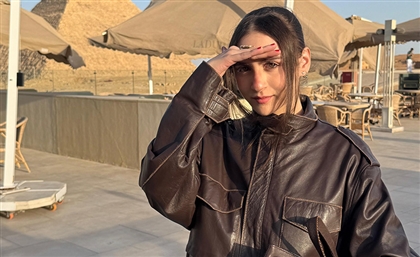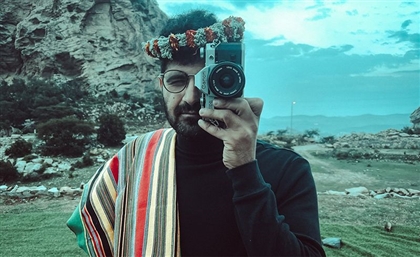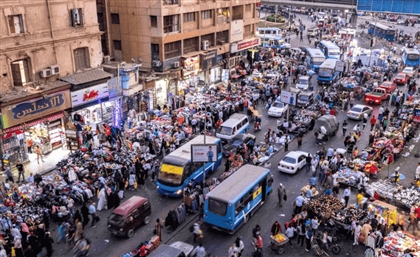Masjid Misr: Inside the Largest Mosque in Africa
In an exclusive interview, we speak with the architects behind the record breaking scale of this monumental mosque.
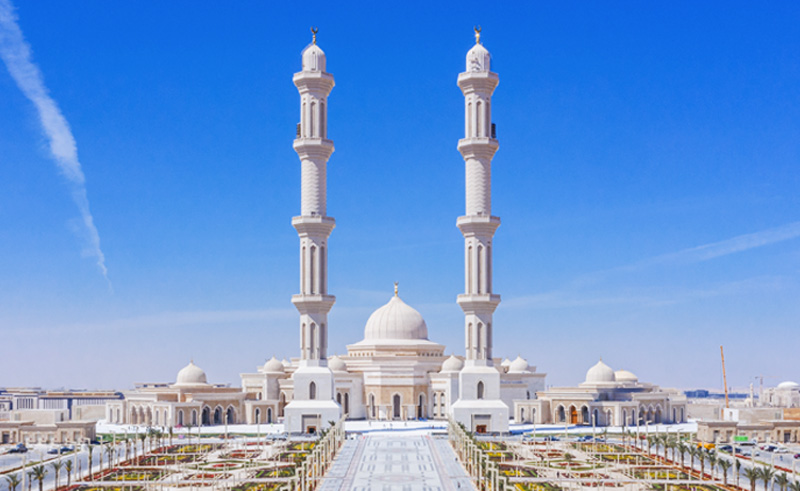
Masjid Misr, also known as ‘Grand Mosque’, has already broken global records. The largest mosque in Africa and the third largest in the Middle East, Masjid Misr also holds the heaviest chandelier on record.
With its substantial scale, the mosque is part of the recently inaugurated - and equally massive - Islamic Cultural Center in the New Administrative Capital, a new hub for Islamic research, congregation and tourism which hosts one-of-a-kind Quran recital halls and multipurpose halls.
 Covering an area of 250,000 sqm, the sprawling nature of the centre provides the mosque with exterior courts that allow it to accommodate approximately 131,000 worshippers; a capacity that’s third only to the two Holy Mosques in Mecca and Medina.
Covering an area of 250,000 sqm, the sprawling nature of the centre provides the mosque with exterior courts that allow it to accommodate approximately 131,000 worshippers; a capacity that’s third only to the two Holy Mosques in Mecca and Medina.
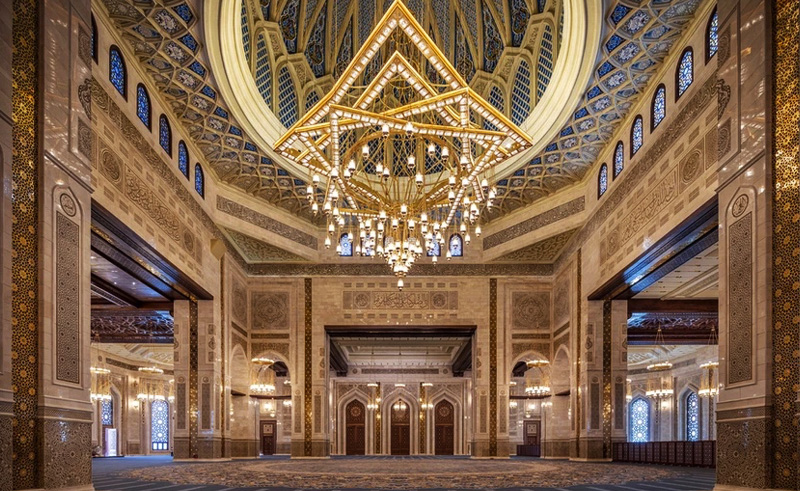 Once you’ve made it through the seemingly endless landscaping, glancing at the towering minarets which are almost as tall as Cairo Tower and are fitted with observation decks overlooking the new capital, the main doors - six metres high with ornaments running through its interlocking wood - offer a glimpse of what’s inside.
Once you’ve made it through the seemingly endless landscaping, glancing at the towering minarets which are almost as tall as Cairo Tower and are fitted with observation decks overlooking the new capital, the main doors - six metres high with ornaments running through its interlocking wood - offer a glimpse of what’s inside.
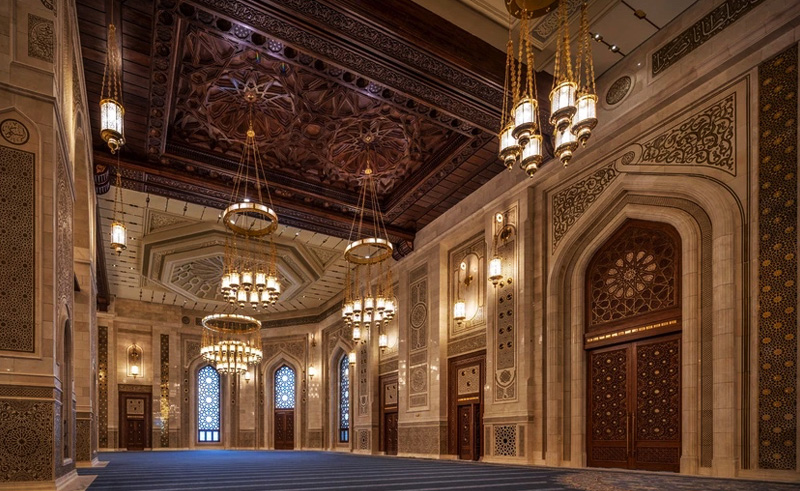 We entered the mosque with Mohamed Talaat - Founder of Mohamed Talaat Architects (MTA), the design consultants of the mosque - for an exclusive interview on the construction of Masjid Misr, and the challenges of fulfilling its immense potential.
We entered the mosque with Mohamed Talaat - Founder of Mohamed Talaat Architects (MTA), the design consultants of the mosque - for an exclusive interview on the construction of Masjid Misr, and the challenges of fulfilling its immense potential.
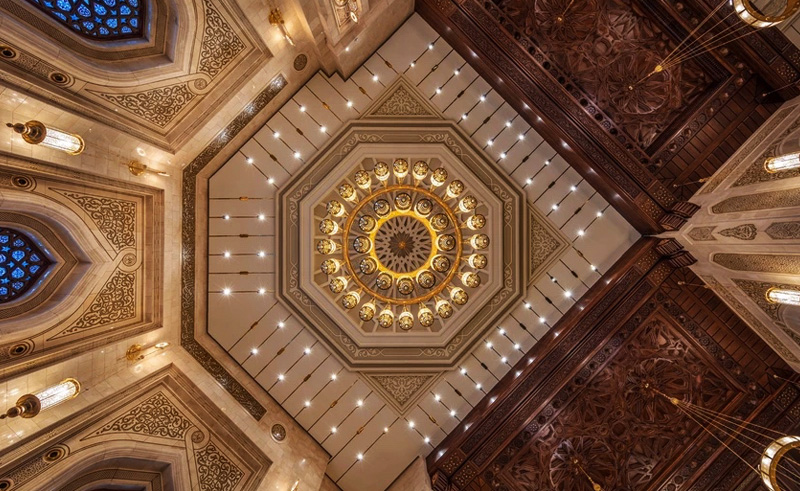 After winning a competition for the interior design of Masjid Misr, MTA were commissioned as the interior design consultants for the project. They went on to work on exterior facades, entrances, courtyards and the ‘sabil’ fountain alongside Engineering Consultants Group (ECG), under the supervision of the Egyptian Armed Forces Engineering Authority.
After winning a competition for the interior design of Masjid Misr, MTA were commissioned as the interior design consultants for the project. They went on to work on exterior facades, entrances, courtyards and the ‘sabil’ fountain alongside Engineering Consultants Group (ECG), under the supervision of the Egyptian Armed Forces Engineering Authority.
“We were proud to win it. It felt like the start of something special,” Talaat recalls. “When we started developing the concept we wanted to focus on natural materials, so that when you enter it feels like an awe-inspiring, sculpted space.”
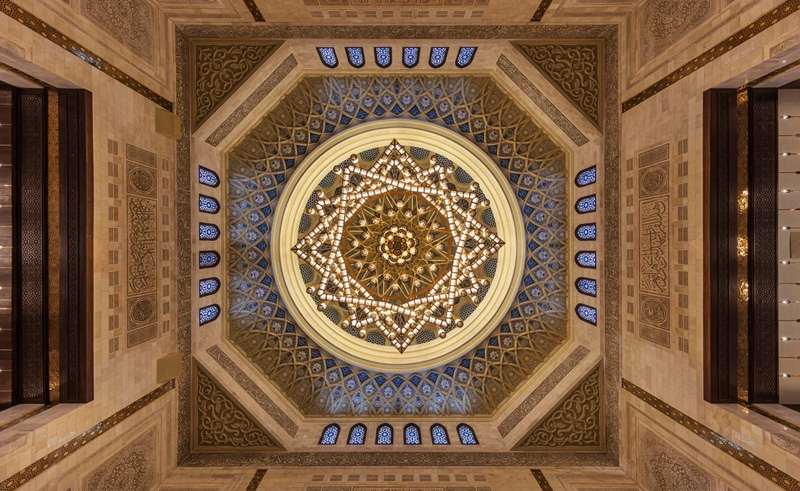 Four massive arches and large masses were used to accomplish the feat, ensuring that visitors feel dwarfed in comparison. While every surface proved eventful. “Art runs through the mosque, from the windows and doors to the ventilation systems,” Talaat says.
Four massive arches and large masses were used to accomplish the feat, ensuring that visitors feel dwarfed in comparison. While every surface proved eventful. “Art runs through the mosque, from the windows and doors to the ventilation systems,” Talaat says.
Ebdaa, a local marble factory, played a role in the mosque’s internal wall cladding. “Historical Islamic ornaments were engraved into whole marble slabs rather than smaller assembled pieces,” Talaat explains. These were applied to the cornices, which weigh approximately 300 kg; a sample of the confounding numbers behind the design.
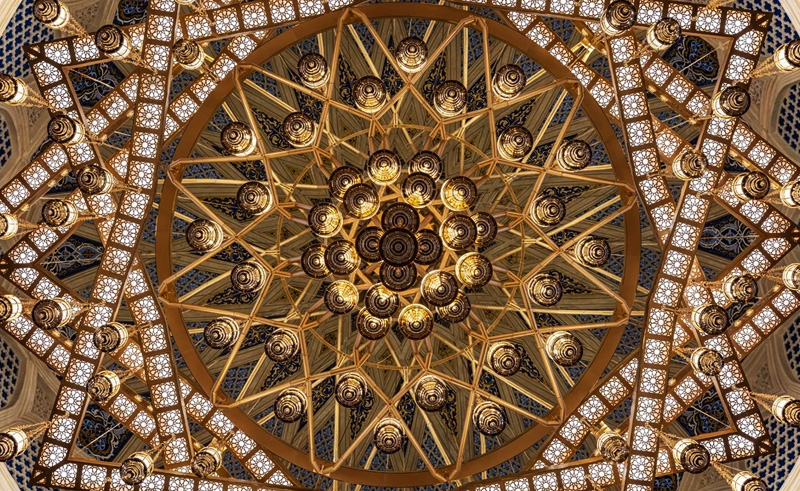 The main dome sits on the centre of the mosque; from the floor to the top of the dome, the space reaches a staggering height of 58 metres. Regardless of how the number sounds, it can only be truly grasped when experienced in person. In other words, it’s like looking through an open, 20-storey building.
The main dome sits on the centre of the mosque; from the floor to the top of the dome, the space reaches a staggering height of 58 metres. Regardless of how the number sounds, it can only be truly grasped when experienced in person. In other words, it’s like looking through an open, 20-storey building.
Every corner of the mosque is enough, both in size and detail, to be considered a mosque on its own. Each offers a unique view of the 32 metre wide dome, which had been assembled on the ground and then lifted up.
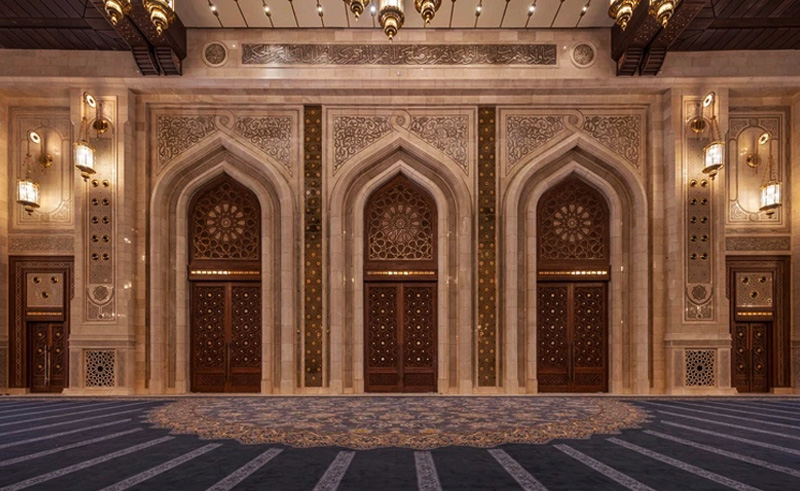 The dome features a breakaway in colour, with blue reflecting purity and subtly contrasting the general beige palette. Drawings by Egyptian artists and painters were painted on special fabrics which were then installed in place. “They recall the beautiful art we often see in Islamic architecture and feature the 99 Names of Allah,” Talaat explains.
The dome features a breakaway in colour, with blue reflecting purity and subtly contrasting the general beige palette. Drawings by Egyptian artists and painters were painted on special fabrics which were then installed in place. “They recall the beautiful art we often see in Islamic architecture and feature the 99 Names of Allah,” Talaat explains.
The main chandelier hangs midair under the dome, with lanterns offering a nostalgic aura within its Islamic star design. “The star design is only seen in its true form when you’re standing under its centre,” Talaat says, referring to Egyptian crystal manufacturing company Asfour Crystal’s contribution to the mosque. The chandelier hangs above a padded carpet featuring delicate foliage drawings.
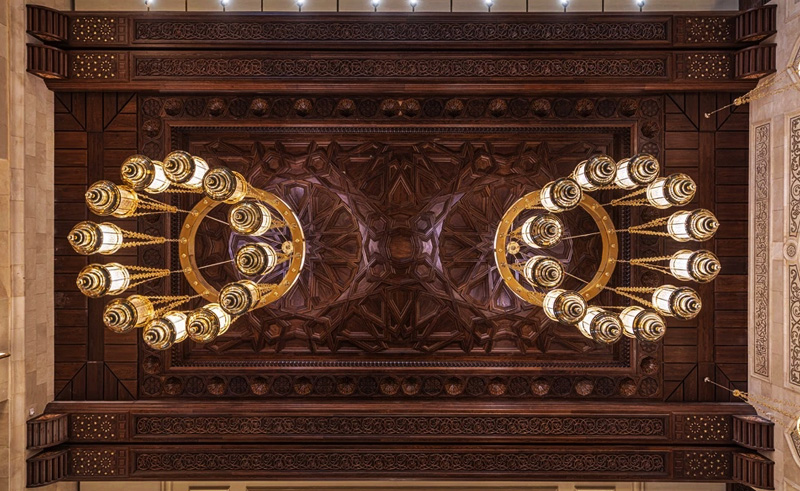 “Every detail in the chandelier was derived from Islamic geometry to complement the dome’s ornaments,” Talaat says. “It’s not only the biggest and heaviest in the world, but I also believe that it’s the most beautiful in the world.”
“Every detail in the chandelier was derived from Islamic geometry to complement the dome’s ornaments,” Talaat says. “It’s not only the biggest and heaviest in the world, but I also believe that it’s the most beautiful in the world.”
Ceilings offer a melange of natural interlocking wood, inspired by various Islamic eras, each of which are depicted with all their intricacies. “We looked at numerous examples from Ibn Tulun Mosque and Al Mu’ayyad Sheikh Mosque, all the way back to woodworking derived from old churches,” Talaat recalls.
From those surfaces and down to the doors and windows, brass was used to coherently cover almost every surface. On the doors, it’s accompanied with handmade niello, while on the windows it’s with stained glass. “Whether it’s the lighting, the colours or the relationship between materials, everything was put together to create a unique aura.”
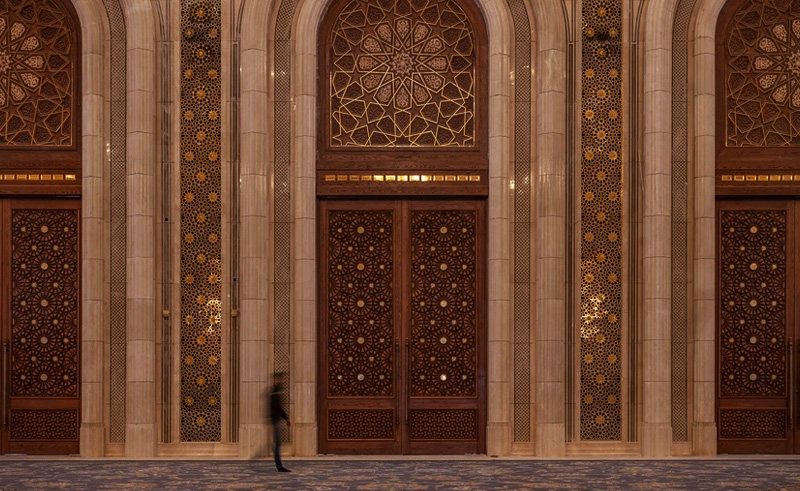 A major element of how mosques are experienced is their soundscape, their resonance and reverberations. While most traditional mosques have haphazardly placed speakers, the entire sound system in Masjid Misr remains hidden, while sound insulation throughout its surfaces ensures ethereal echoes during prayers.
A major element of how mosques are experienced is their soundscape, their resonance and reverberations. While most traditional mosques have haphazardly placed speakers, the entire sound system in Masjid Misr remains hidden, while sound insulation throughout its surfaces ensures ethereal echoes during prayers.
“The sheikh leading prayers will enjoy the mosque the most because he’ll have the best vantage point,” Talaat says, referring to the 16-metre-high Minbar, which is made out of six different types of wood with teak taking the lead. The neighbouring Qibla wall epitomises the overall design approach with its alluring inscriptions.
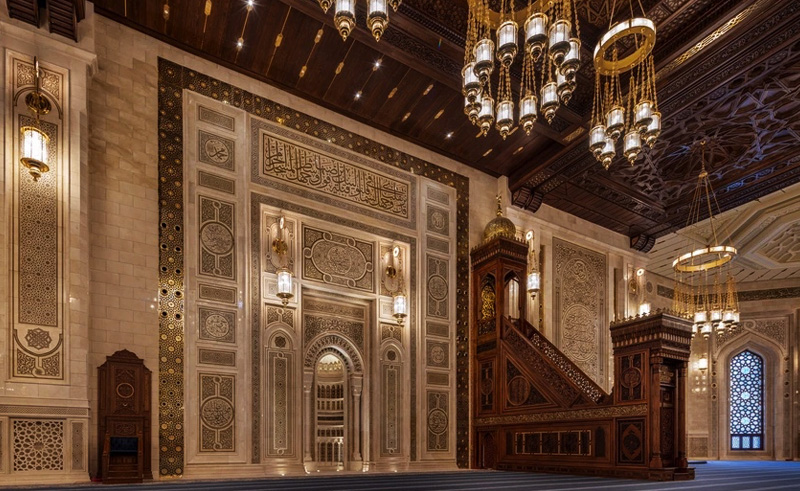 Positioned on an elevated platform, Masjid Misr will offer a unique view of the new capital and its governmental district. “The new capital has a diverse range of styles, from the classic to the modern,” Talaat says. “This is one of the most important projects we’ve worked on. It’s the largest in scale and the closest to our hearts.”
Positioned on an elevated platform, Masjid Misr will offer a unique view of the new capital and its governmental district. “The new capital has a diverse range of styles, from the classic to the modern,” Talaat says. “This is one of the most important projects we’ve worked on. It’s the largest in scale and the closest to our hearts.”
Talaat speaks from his experience working on over 25 projects in the New Administrative Capital. Masjid Misr sits on top of its platform, evoking the spirit of the new capital, one that attempts to draw from tradition to cater to modern day needs. If it wasn’t for the design consultants and the main contractor, Arab Contractors, employing modern construction techniques, most of the mosque’s features would’ve taken decades to complete.
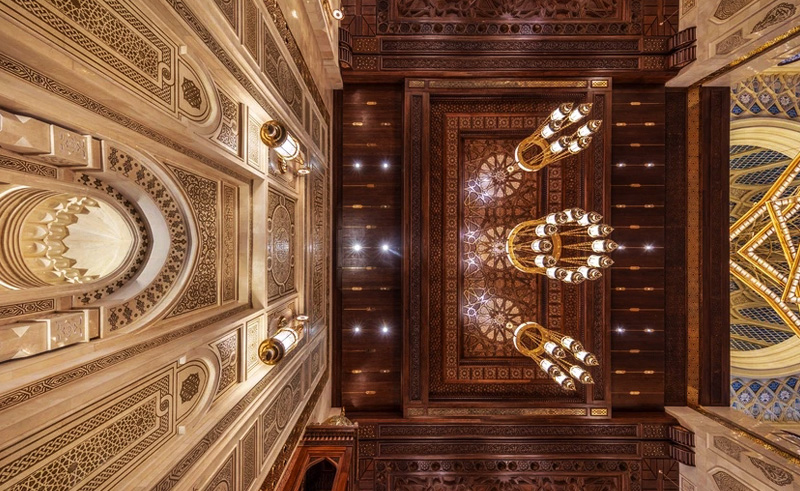 Drone Footage Credit: MTA
Drone Footage Credit: MTA
Photography Credit: Essam Arafa
- Previous Article Italian-Palestinian Duo No Input Debuts Eponymous Electro EP
- Next Article Egyptian Embassies Around the World
Trending This Week
-
Dec 23, 2025









